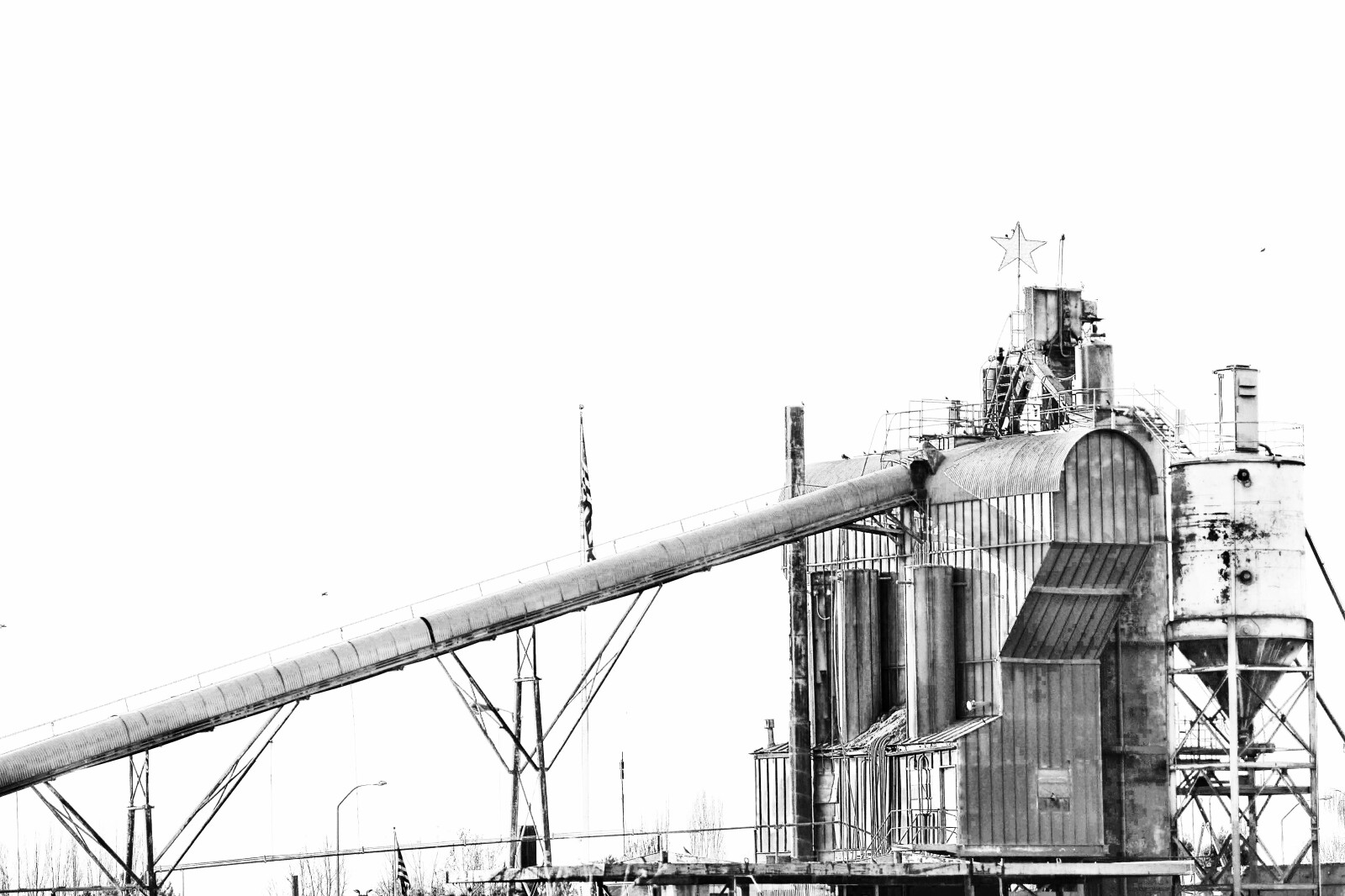Harbison-Walker Refractories Co.
Harbison-Walker Refractories Co., a prominent player in the production of refractory products, has played a significant role in industrial advancements through its provision of high-temperature resistant materials. Founded in the late 19th century, the company became a key supplier to various sectors such as steel, glass, and cement manufacturing. Despite its contributions to industrial efficiencies, Harbison-Walker's legacy is marred by its historical use of asbestos, a practice that has led to severe health consequences for workers exposed to this hazardous material. The company's trajectory reflects both the technological progress in refractory solutions and the evolving understanding of occupational health risks associated with asbestos, necessitating stringent safety protocols and accountability measures in the present day.

Key Takeaways
- Harbison-Walker Refractories Co. heavily used asbestos in their products, posing a risk to workers.
- Exposure to asbestos can lead to serious health issues, including asbestos-related diseases.
- Workers in the construction industry who interacted with asbestos-contaminated materials were also at risk.
- Family members of workers who were directly exposed to asbestos were also at risk of secondary exposure.
Asbestos Use in Products
Within the refractory industry, Harbison-Walker Refractories Co. incorporated asbestos extensively into its products due to its high resistance to heat and fire. The utilization of asbestos conferred durability and insulation properties essential for refractory applications. However, this incorporation led to substantial long term health effects among workers and consumers. Prolonged inhalation of asbestos fibers engendered a spectrum of pulmonary conditions, including asbestosis and mesothelioma, a malignancy of the mesothelial tissues.
The magnitude of these health repercussions precipitated numerous asbestos related lawsuits against Harbison-Walker Refractories Co. Claimants sought recompense for the deleterious health impacts engendered by asbestos exposure. The litigation landscape has been shaped by these proceedings, underscoring the need for stringent regulatory oversight and proactive occupational health measures in industries utilizing hazardous materials.
Fireproofing and Health Hazards
Fireproofing applications at Harbison-Walker Refractories Co. involved extensive use of asbestos, leading to significant health hazards for employees and consumers. The integration of asbestos in fireproofing materials was mandated for its high resistance to heat and durability, without initial regard for the long-term effects on human health. Comprehensive fireproofing regulations have since been established to mitigate such risks, including stringent controls on asbestos use.
Key aspects regarding asbestos and health implications include:
- Asbestos fibers, once inhaled, can cause life-threatening diseases, such as mesothelioma and lung cancer.
- Symptoms of asbestos-related conditions may not manifest until decades after exposure.
- Current fireproofing regulations enforce strict guidelines to prevent asbestos exposure.
- Employers are required to provide protective equipment and training to minimize health risks.
Technical analysis of historical practices highlights the critical need for adherence to modern safety standards to prevent health hazards.
Construction Industry Risks
While Harbison-Walker Refractories Co. supplied materials integral to construction, the asbestos within those products posed severe health risks to workers in the industry. Strict adherence to construction industry regulations was mandated to mitigate exposure to asbestos and prevent long-term health effects. However, historical practices often fell short of these protective measures. Asbestos fibers, once inhaled, can cause life-threatening diseases, with symptoms manifesting decades later. This latency period complicated regulatory efforts and obfuscated the causal link between exposure and subsequent health conditions. Consequently, workers faced a myriad of health challenges, underscoring the critical need for comprehensive safety protocols and rigorous enforcement within the construction industry to protect against such occupational hazards.
Recognizing Asbestos-Related Diseases
The identification of asbestos-related diseases is crucial for individuals who have been exposed to asbestos-contaminated materials, such as those produced by Harbison-Walker Refractories Co. Enhanced asbestos-related diseases awareness is paramount in recognizing the health risks of asbestos exposure. Diagnosing these conditions requires a multifaceted approach, often involving:
- Detailed occupational history to assess potential asbestos exposure.
- Radiological imaging, such as chest X-rays and CT scans, to detect abnormalities.
- Pulmonary function tests to measure the impact on lung capacity and performance.
- Biopsies and histopathological analysis to confirm the presence of asbestos fibers and related cellular changes.
Physicians employ these technical and precise diagnostic tools to identify and manage asbestos-related diseases effectively, thereby improving patient outcomes.
Importance of Health Monitoring
For individuals with a history of asbestos exposure, such as those employed by Harbison-Walker Refractories Co., regular health monitoring is an essential measure to promptly identify any onset of related diseases. The systematic surveillance of an exposed individual's health status yields critical health monitoring benefits, facilitating early detection and intervention, which may enhance the prognosis of asbestos-related conditions. Such vigilance is not only a preventative health strategy but also substantiates the documentation required to assert legal rights. In the event of disease manifestation, comprehensive records from consistent health monitoring can be instrumental in securing compensation through legal avenues. Therefore, rigorous health monitoring is indispensable for safeguarding both the physiological well-being of the individual and the integrity of potential legal claims.
Manufacturer Negligence
Health monitoring practices starkly contrast with the history of manufacturer negligence displayed by Harbison-Walker Refractories Co., which failed to protect its workers from the dangers of asbestos exposure. This negligence not only jeopardized worker safety but also exposed the company to significant manufacturer liability.
Key aspects of this negligence included:
- Inadequate dissemination of information regarding asbestos hazards.
- Failure to implement sufficient protective measures for employees.
- Lack of regular risk assessments in the workplace.
- Insufficient training for workers handling asbestos-containing materials.
The technical and factual dissection of these failures underscores the company's disregard for the well-being of its employees and the subsequent legal and moral consequences stemming from such oversight.
Occupational Disease Statistics
Numerous former employees of Harbison-Walker Refractories Co. have been diagnosed with asbestos-related diseases, reflecting a grim statistic in occupational health. These statistics underscore the imperative need for robust occupational disease prevention measures. The latency period of asbestos-related diseases necessitates stringent asbestos regulations and standards to mitigate the risk of exposure. The data elucidates that comprehensive health monitoring and prevention strategies are critical in curtailing the incidence of such diseases. Industry standards have evolved to prioritize worker safety, mandating proper protective equipment and exposure minimization protocols. Despite these advancements, the historical burden of asbestos exposure at Harbison-Walker Refractories Co. continues to manifest in the health outcomes of its workforce, substantiating the need for ongoing vigilance in occupational health practices.
High-Risk Occupations
Harbison-Walker Refractories Co.'s reliance on asbestos in their manufacturing processes put certain professions at particularly high risk for developing asbestos-related illnesses. Asbestos exposure prevention becomes pivotal when considering the long-term health effects associated with this hazardous material. The following occupations were most susceptible:
- Refractory material manufacturers, due to direct contact with asbestos-containing products.
- Construction workers handling or disturbing old refractory linings and insulation.
- Maintenance personnel tasked with repairing or replacing asbestos-laden refractory components.
- Demolition workers involved in tearing down structures that incorporated asbestos materials.
For individuals in these roles, stringent adherence to safety protocols and continuous health monitoring are essential to mitigate the risks of enduring adverse health consequences.
Employee Screening Programs
Within the framework of occupational health and safety, Harbison-Walker Refractories Co. offers comprehensive employee screening programs to detect potential asbestos-related health issues at an early stage. These screenings are an integral component of the company's commitment to mitigating the long-term risks associated with asbestos exposure. The employee health screenings are designed to be thorough and are conducted by medical professionals adept in identifying early markers of asbestos-related conditions. Furthermore, Harbison-Walker Refractories Co. has instituted robust asbestos awareness programs aimed at educating employees about the hazards of asbestos and the importance of early detection. These initiatives underscore the company's proactive stance in safeguarding worker health and adhere to rigorous standards of industrial safety protocols.
Compensation Eligibility
Although many Harbison-Walker Refractories Co. employees were routinely exposed to asbestos, those diagnosed with asbestos-related diseases may be eligible for compensation. The asbestos compensation process is multifaceted, requiring a detailed understanding of legal procedures and timelines. It is imperative to explore all legal assistance options available to maximize potential compensation and navigate the complexities of the legal system. Key considerations in this process include:
- Documentation of asbestos exposure and medical diagnosis.
- Understanding the statute of limitations for filing claims.
- Selection of competent legal representation specialized in asbestos litigation.
- Evaluation of potential compensation avenues, including trust funds and lawsuits.
Professional legal teams can provide the technical guidance necessary to analyze and present a compelling case for compensation.
Legal Support for Families
Families affected by asbestos-related diseases due to employment at Harbison-Walker Refractories Co. may find solace in seeking legal support to navigate the complexities of compensation claims. Asbestos exposure has been notoriously linked to severe health conditions, necessitating a structured approach towards legal recourse. Support services for these families provide a critical framework for understanding and exercising legal options available within the statute of limitations. Specialized attorneys offer analytical guidance, ensuring the case is handled with technical proficiency. These legal options are designed to streamline the process of filing claims, mitigating the intricacies associated with such cases. As a result, families can secure the compensation they are entitled to without the burden of navigating the legal system unassisted.
Pursuing Wrongful Death Claims
In the aftermath of a worker's death due to asbestos-related diseases from employment at Harbison-Walker Refractories Co., their family members may be entitled to pursue wrongful death claims. The wrongful death claims process necessitates a nuanced understanding of legal statutes and the correlation between occupational exposure and subsequent diseases.
A meticulous wrongful death claim involves:
- Thorough documentation of the victim's employment history and asbestos exposure.
- Medical records substantiating the asbestos-related disease as the cause of death.
- A detailed calculation of economic and non-economic damages incurred by the family.
- Strategic legal representation for families to navigate the complexities of tort law effectively.
Professional legal teams specialize in providing precise legal representation, ensuring that families obtain justice and compensation through the wrongful death claims process.
Secondary Exposure Concerns
While primary asbestos exposure affected workers at Harbison-Walker Refractories Co., secondary exposure also posed significant risks to their family members who unknowingly came into contact with asbestos fibers brought into the home. Training programs for asbestos awareness are essential in preventing such inadvertent hazardous exposures. These programs should aim to educate not only workers but also their households on the dangers and proper handling of asbestos-contaminated materials. Furthermore, support for medical treatment and expenses is a critical component for those suffering from asbestos-related diseases, whether from primary or secondary exposure. It is imperative that the responsible entities establish comprehensive support systems to alleviate the financial burdens associated with long-term medical care for affected individuals.
Statute of Limitations Advice
Understanding the statute of limitations is crucial for Harbison-Walker Refractories Co. workers and their families considering legal action for asbestos-related diseases. The legal process for compensation claims is sensitive to time constraints, which vary by jurisdiction and specific circumstances related to the case. Here are key statute of limitations considerations for potential claimants:
- The countdown generally starts at the time of diagnosis or discovery of the disease.
- Each state has its own specific statute of limitations for filing asbestos-related lawsuits.
- Failure to file within the applicable time frame may result in forfeiture of the right to compensation.
- Certain legal doctrines may extend or toll the statute of limitations in some cases.
Navigating these technicalities demands a precise, analytical approach to ensure timely and effective legal action.
Seeking Legal Recourse
Workers affected by asbestos-related diseases from Harbison-Walker Refractories Co. may pursue legal action to seek compensation for their injuries. The legal process is initiated by filing a claim, which necessitates a meticulous compilation of employment, medical, and exposure records. Acknowledging workers' rights, the justice system provides a mechanism for redressal through civil litigation or settlement negotiations. A thorough analysis of each case, grounded in medical diagnosis and occupational history, is critical in establishing the nexus between asbestos exposure and resultant health conditions. Legal professionals specializing in such cases can offer guidance, ensuring that the technicalities of the process do not impede the assertion of workers' rights. It is imperative for affected parties to engage promptly with the legal system, respecting statutory deadlines.
Frequently Asked Questions
Can Environmental Factors Other Than Direct Asbestos Exposure Contribute to the Risk of Asbestos-Related Diseases in Harbison-Walker Refractories Co. Workers?
Environmental factors, such as secondary exposure risks, can indeed augment the hazard of asbestos-related diseases. Even without direct contact, individuals may encounter asbestos fibers through environmental pathways, including contaminated clothing or equipment. Stricter environmental regulations aim to mitigate these indirect exposure scenarios, necessitating comprehensive decontamination procedures and rigorous adherence to safety protocols to protect both workers and their families from the pernicious effects of asbestos.
How Have Safety Protocols and Regulations for Handling Asbestos Changed Since Harbison-Walker Refractories Co. Used It in Their Products?
Since asbestos's peak usage, safety protocols have considerably evolved. Current asbestos legislation mandates strict exposure limits and requires comprehensive handling training for workers. These regulations are designed to minimize health risks, reflecting a technical and analytical approach to occupational safety. Adherence to these precise safety standards is critical in preventing asbestos-related diseases, signifying a pivotal shift from past practices where such meticulous attention to hazardous material management was less pronounced.
What Measures Are in Place to Ensure the Proper Disposal or Recycling of Asbestos-Containing Materials From Harbison-Walker Refractories Co. Sites?
Current asbestos legislation mandates strict waste management protocols for the disposal or recycling of asbestos-containing materials. These regulations require a technical and analytical approach to ensure environmental safety and public health are not compromised. Waste management practices include precise identification, secure containment, transportation, and disposal in designated facilities. These measures are critical for mitigating the risks associated with asbestos, adhering to legal standards and safeguarding against exposure.
Are There Any Community Outreach or Education Programs Sponsored by Harbison-Walker Refractories Co. to Raise Awareness About the Dangers of Asbestos?
As a beacon of knowledge in a sea of misinformation, asbestos education initiatives are paramount. Community engagement efforts play a critical role in illuminating the shadows cast by asbestos-related risks. By deploying precise, analytical strategies, these programs are designed to distill complex health information into actionable wisdom, fostering a well-informed public poised to navigate the perils of asbestos with vigilance and understanding.
How Does Harbison-Walker Refractories Co. Support Ongoing Research Into Asbestos-Related Diseases and Potential Treatments or Cures?
The support for ongoing research into asbestos-related diseases often involves the allocation of research funding and the recognition of legal responsibility by implicated entities. Financial contributions are typically directed towards studies focusing on innovative treatments and potential cures, reflecting a commitment to address the long-term impacts of asbestos exposure. Ensuring corporate accountability, such support also aligns with ethical obligations and potentially legal settlements or court mandates.

This post has been generated by AI and was not reviewed by editors. This is Not legal advice. Please consult with an attorney.




